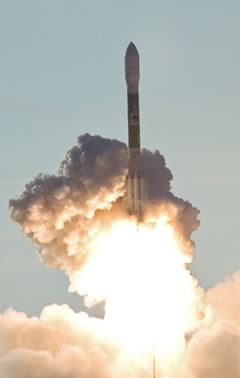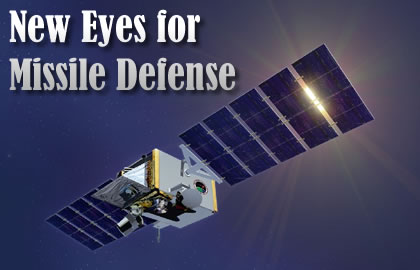The first pair of Space Tracking and Surveillance System demonstration (STSS-Demo) satellites were launched September 25, 2009 on a NASA Delta II rocket from Cape Canaveral, FL. “This demonstration will show the inherent advantages space sensors bring to persistent missile tracking and engagement,” said Gabe Watson, vice president and STSS program manager for Northrop Grumman’s Aerospace Systems sector. “Space-based sensors will augment existing radar to enable missile tracking through all phases of flight from boost through intercept. The U.S. Missile Defense Agency is developing the STSS because terrestrial-based sensor systems have inherent limitations to acquire and track missiles around the curvature of the earth” said Watson.
The STSS-Demo experiment represents part of a space-based constellation of low-earth orbit satellites that will detect and provide critical tracking information about ballistic missiles globally. STSS’s sensors comprise a launch detection sensor and a movable tracking sensor to follow midcourse objects in space. The sensors employ both infrared and visible cameras, capable of tracking and discriminating missiles in midcourse; report on post-boost vehicle maneuvers, reentry vehicle deployments and the use of various types of decoys. The sensor will also provide post-engagement hit/kill assessment. The two satellites are designed to operate in tandem, were originally built as the ‘lower tier’ for the Space Based Infra-Red missile defense early warning system – a heterogeneous constellation of space-based sensors supporting missile defense programs. In 2002 SBIRs ‘lower tier’ was cancelled later to be revived as SSTS-Demo in 2006 under the newly established Missile Defense Agency. Each satellite weighs 2.244 ton and carries an infrared imaging sensor built by Raytheon. The satellites were built by Northrop Grumman.
Lessons and experience gained from STSS Demo will be instrumental in leading a future MDA’s decision on the future deployment of a constellation of affordable, continuously available precision tracking space sensors.

















